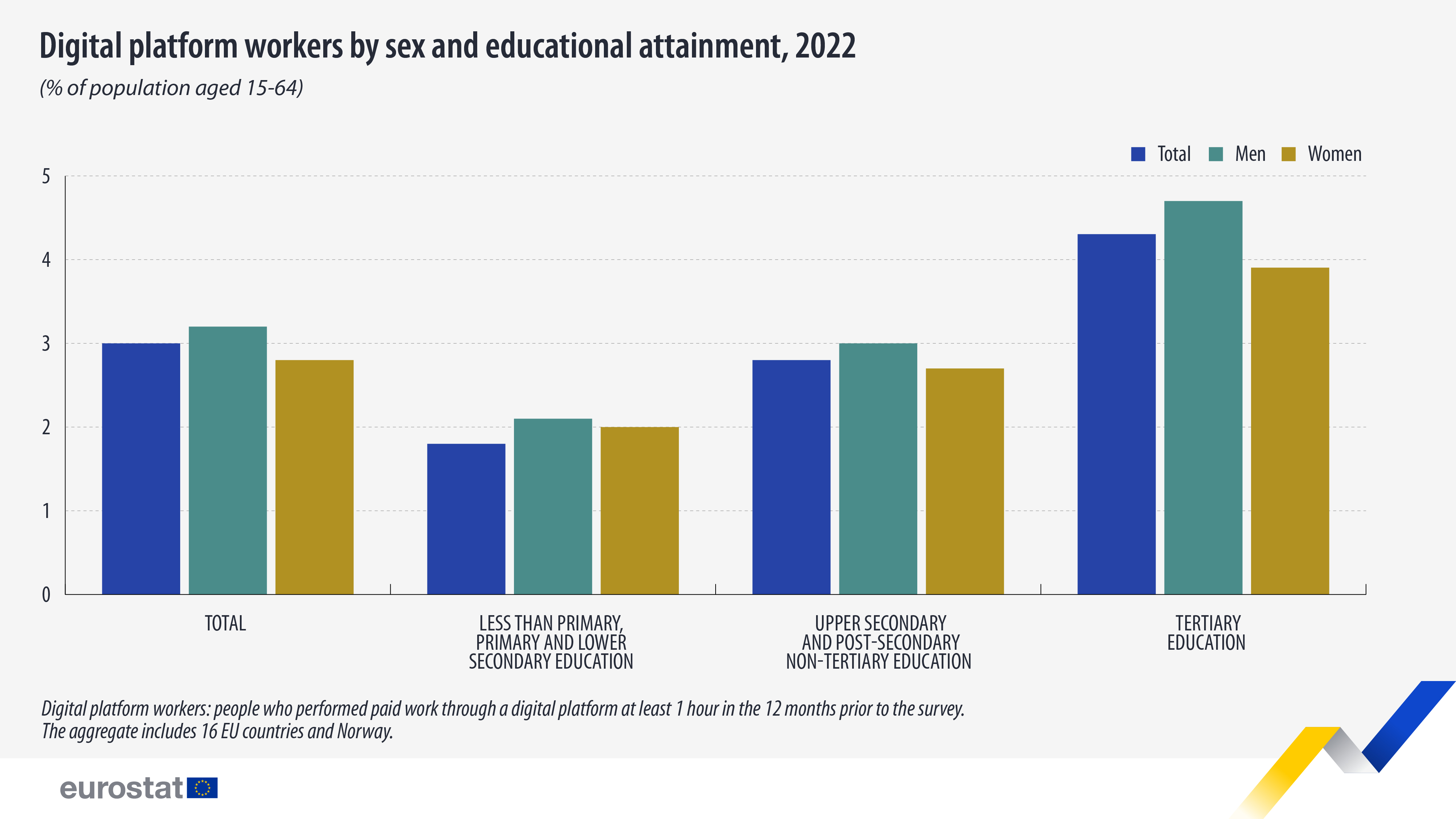The share was highest among people with tertiary education (4.3%) and lowest among those who finished up to lower secondary education (1.8%). Men were more likely to engage in platform work than women (3.2% vs. 2.8%).
Eurostat began collecting data on the emerging phenomenon of digital platform employment in 2022 with a pilot survey within the European Union Labour Force Survey (EU-LFS).
The results, published as experimental statistics, provide information on the people who performed paid work through digital platforms with a breakdown by sex, age, education level, activity type and employment status, as well as on their work arrangements and working conditions.
Source dataset: lfst_dpw_01
In 2022, more than half of digital platform workers were not covered in case of unemployment (62.4%), sickness (56.3%) or work-related accidents (54.2%). Roughly one-quarter of the workers were covered by another job not related to platforms (25.1% for accidents, 25.0% for sickness and 23.3% for unemployment) and the remaining workers were covered by the platform or by another, not work-related, source.
Source: Eurostat
Legal Notice: The information in this article is intended for information purposes only. It is not intended for professional information purposes specific to a person or an institution. Every institution has different requirements because of its own circumstances even though they bear a resemblance to each other. Consequently, it is your interest to consult on an expert before taking a decision based on information stated in this article and putting into practice. Neither Karen Audit nor related person or institutions are not responsible for any damages or losses that might occur in consequence of the use of the information in this article by private or formal, real or legal person and institutions.







